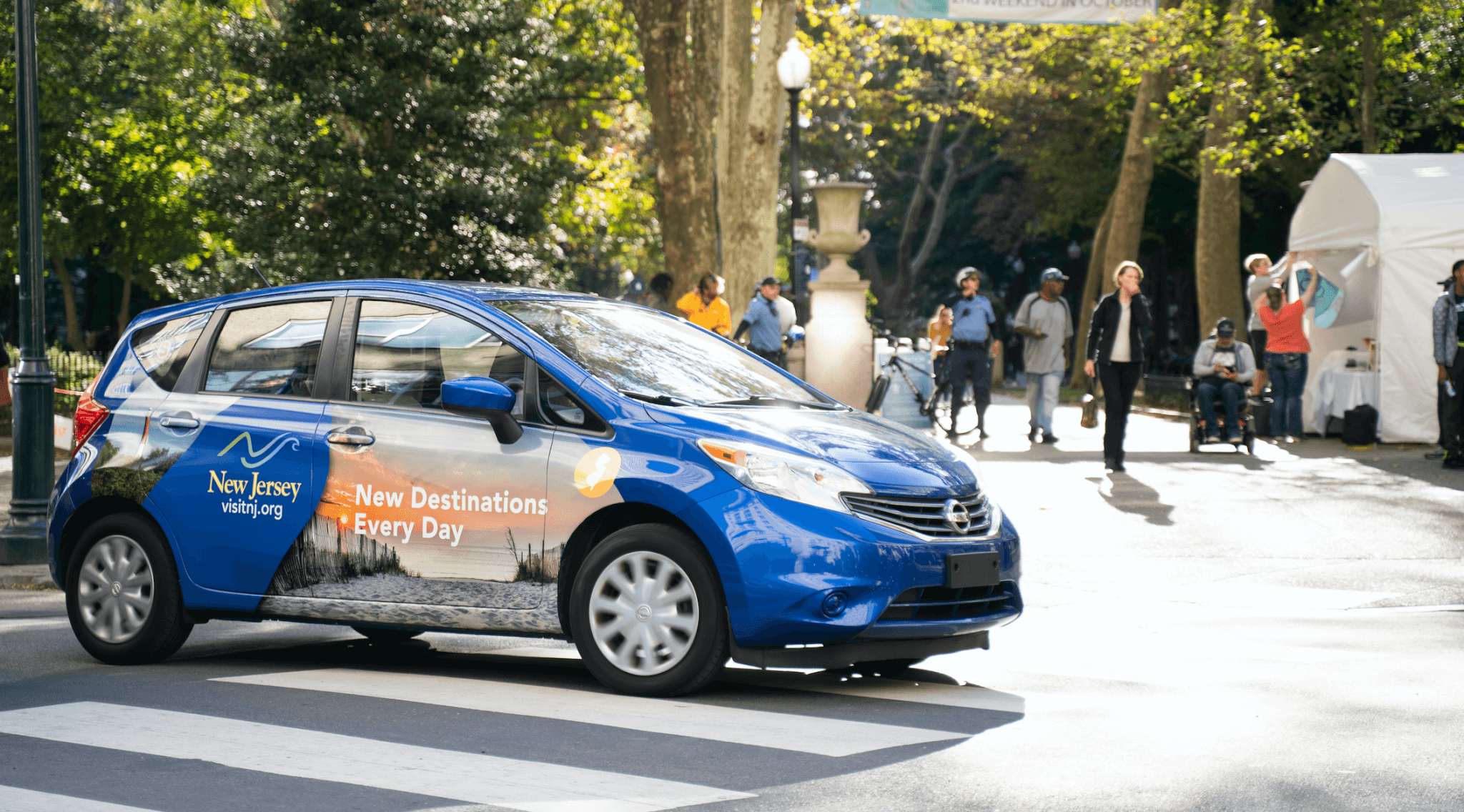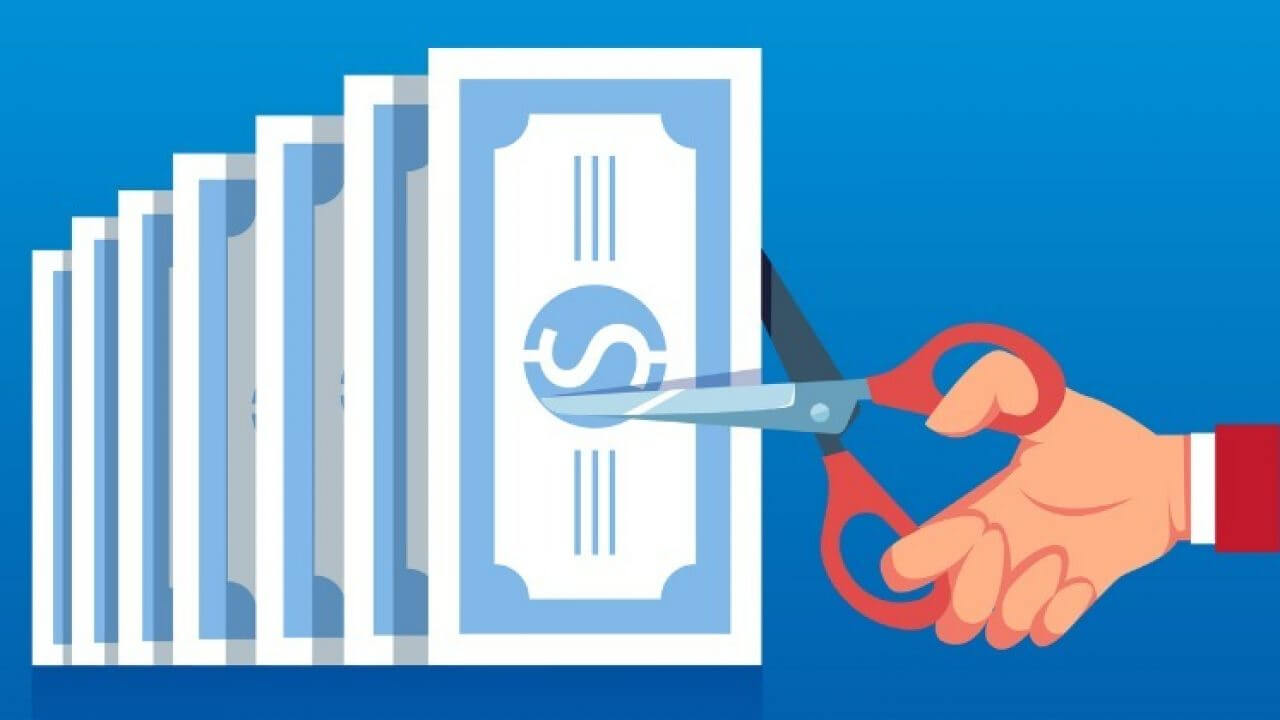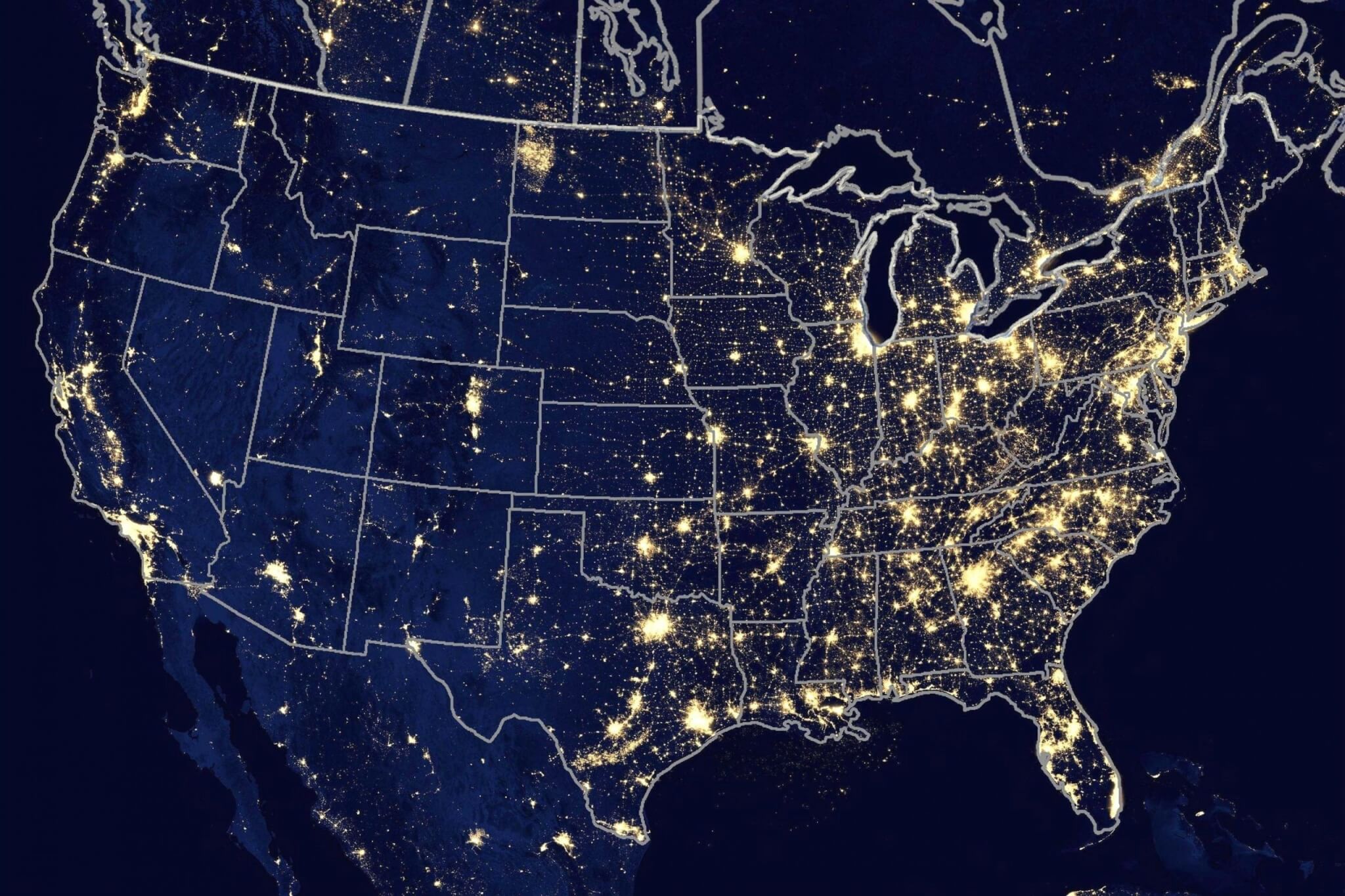Article Overview
The Five Benefits of Wrapped Car Advertising Include:
1. Memorable – proven to be the most memorable form of transit advertising.
2. Targeted – wrapped cars can reach geographic areas that are difficult, or impossible, to reach through billboards and buses
3. Tracked – gone are the days of no accountability. All wrapped cars are gps tracked with reporting conducted on location, mileage and impressions.
4. Affordable – quite commonly wrapped cars are a fraction of the cost of billboards
5. Scalable – wrapped cars have the ability to reach many markets, with many cars, all through one vendor
Car wraps, a form of graphic media that rose to prominence through its wide usage on service vehicles and 18-wheelers, have recently become an accessible media format to marketers at-large. Within the past few years, a cottage out-of-home industry has been created that enables advertisers to leverage networks of high-mileage rideshare drivers who want to wrap their cars in advertising. Carvertise has been an early pioneer of this format in the United States, while other companies like StickerRide and CarQuids have helped establish the medium in Russia and England.
Although the media format is rapidly growing, there are many marketers that are unfamiliar with this new channel. Understanding the media format’s advantages is critical in leveraging it as a successful marketing channel tactic.
Below we discuss the 5 key differentiation factors of this medium.
1. Memorable
Vehicle wraps are proven to be the most memorable form of transit advertising. A study done by Nielsen in 2019 surveyed 999 participants and asked “When was the last time you noticed [_Medium_] advertising”. The results were as following:

Reach and frequency are usually the primary considerations weighed when assessing how far an ad budget can go within a media format, but what also needs to be taken into account is the memorability factor. After all, what good is an ad’s reach and frequency if nobody cares to look at it?
2. Targeted

In 1965, President Lyndon B. Johnson signed into law the Highway Beautification Act which served to enhance the scenic beauty of driving on highways. The ramifications this had on the billboard industry were significant, as it heavily limited where billboards could be placed. Zoning restrictions is why you’ll pass by 100 billboards on your travels down I-95 instead of, say, 200 billboards. This is also why there is a lack of billboards in highly affluent and suburban geographies.
A large benefit of wrapped cars is that they are prone to no such regulation so they can be used to reach geographic areas which are difficult, or impossible, to reach through any other out-of-home media format. Because of this, wrapped car advertising is frequently used in highly demanded markets like New York City, San Francisco, or Chicago where out-of-home inventory is very expensive.
Car advertising companies like Carvertise, StickerRide and Carquids source their drivers from the specific zip codes and cities being targeted, ensuring that the exposure generated is in the correct locations.
3. Tracked

We live in an era where almost everyone and everything is tracked. Your smart car, your Google home, the cellular computer sitting in your pocket. As indicated through our actions, we consumers have demonstrated that the benefits modern technology outweigh the costs to our privacy. Most of us know and accept that our locations and online activity are being actively tracked at all times. This cultural trend has seeped all the way through to the advertising industry, as marketers now know that this constant connectedness empowers them with higher levels of ad spend visibility.
One glaring exception to this transparency, however, has been the verification around transit out-of-home. When a marketer decides to buy 100 ‘taxi toppers’ in Philadelphia, or 20 wrapped buses in San Francisco, there is no performance tracking beyond a simple proof-of-performance picture showing that the vehicle was wrapped. This has been problematic to many advertisers, as is quite common for buses and taxis to go out of commission for extended periods of time due to mechanical problems, and advertisers have no way of verifying this.
Unlike buses and taxis, wrapped vehicle advertising incorporates a much higher level of transparency and accountability. Drivers selected for an ad campaign are GPS tracked and their mileage, impressions, and location data, are provided back to the advertiser monthly.
4. Affordable

We all hear about the multi-million dollar 30-second Super Bowl ads. A close mind-boggling second, however, are the costs associated with the larger than life billboards in Time Square, NYC which can fetch prices of up to $3,000,000 per month. While we know this is an extreme side of the market, it shows how high the price range can be for out-of-home.
Generally speaking, the shorter the supply and the higher the demand of billboards in a market, the greater the price of renting the billboard. This explains why a highly demanded billboard in an expensive market like downtown San Francisco can cost about $30,000 a month, while an ideally located billboard in downtown Atlanta may cost $20,000 a month. Is it worth the money? Well to understand this, we have to take into consideration what each billboard is delivering – impressions. When impressions and cost are looked at together, the result is a ratio referred to as Cost per Thousand Impressions (CPM). A billboard that costs $25,000 a month, which generates 1,500,000 impressions, will carry a CPM of $16.70
Unlike billboards, cars are in abundant supply. The more crowded the marketplace, the larger the amount of cars available for campaigns. So in situations when billboard prices increase due to short demand, it is very likely that car advertising prices actually decrease. This is an ironic paradox which attract many advertisers to the car advertising medium. This is reflected in the monthly price per car, which will generally range between $350 – $750 per month and generate up to 200,000 impressions per month. The usual CPM’s witnessed for car advertising range between $3 – $10.
5. Scalable

Lastly, given the sheer volume of cars and its ubiquity across the country, car wrap advertising offers the flexibility to go wherever the geographic needs are, in however many markets are needed. This factor is important when considering time efficiency.
When buying traditional out-of-home across multiple markets, a marketer will very commonly have to work with multiple out-of-home vendors. The media vendor that sells wrapped bus advertising in LA, is different then the media vendor that sells wrapped bus advertising in New Orleans. Therefore, a large media buy across 10, 15, 20 cities will necessitate working with multiple vendors. All of this requires time as vendors will have different prices, terms, and styles of business. The result of having one out-of-home media partner that can easily activate markets is more time and money to focus on other things.
Choosing the optimal media mix for an upcoming advertising campaign is never easy, but being familiar with the many media formats and their unique advantages is the right first step. Wrapped car advertising is just one of several out-of-home options available to you, but its growing prominence and strong abilities pave the way for tremendous marketing gains to be had if leveraged properly.



